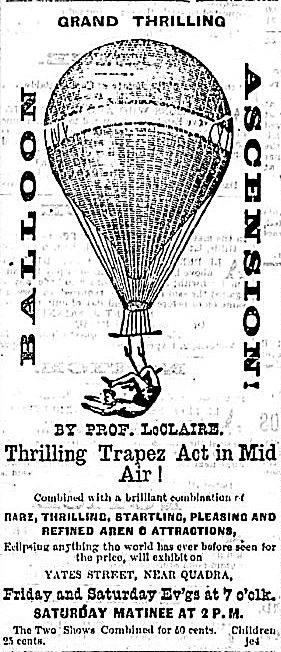 |
Victoria Airport
|
The first manned ascent in British Columbia took
place on June 5, 1880, when �Prof. LeClaire�
ascended over downtown Victoria hanging from his
hot air balloon, a flight documented in the
day�s British Colonist newspaper. The feat was
successfully repeated the next day, then again
in Nanaimo on June 8th. |
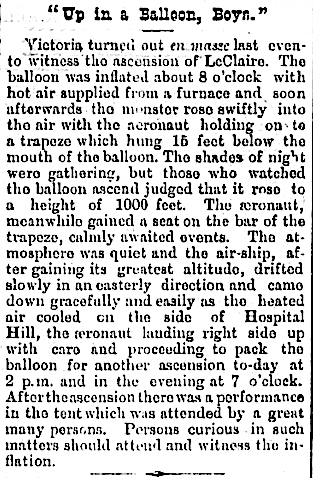
|
The
heavier than air flight in Victoria took place
twenty years later in 1910, when William Wallace
Gibson flew his homebuilt aircraft from the Dean
farm near Mt. Tolmie. |
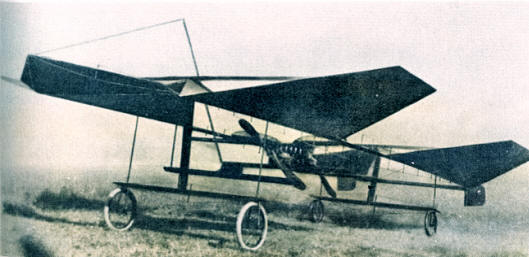 |
Return to
map |
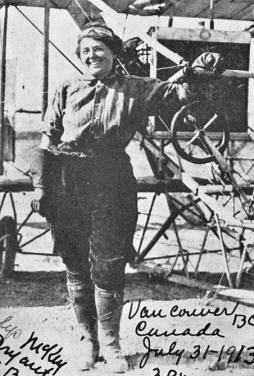 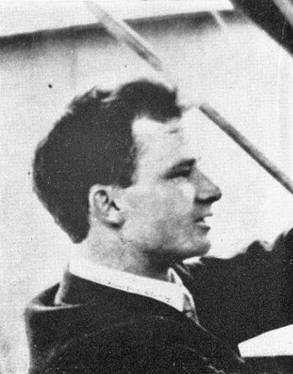
Subsequent years saw visits by
different aircraft making public displays, mainly to and
from Willows Park in Oak Bay. Pilots
Alys and John Bryant
both flew from the Willows Park racetrack in Oak Bay in
August, 1913. On August 6th, John unhappily
became the first aviation fatality in Canada when his
aircraft broke apart at 800 feet in gusty conditions over
Victoria.
. |
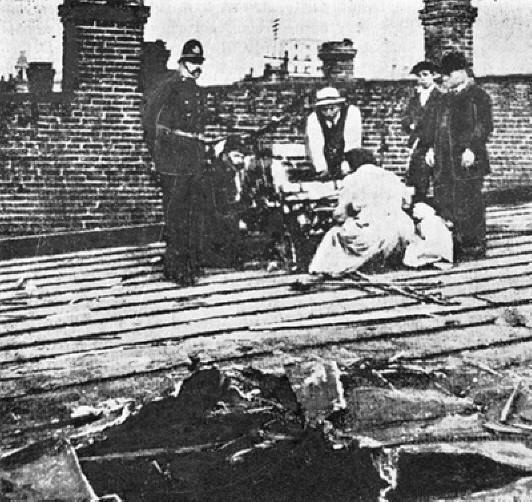 |
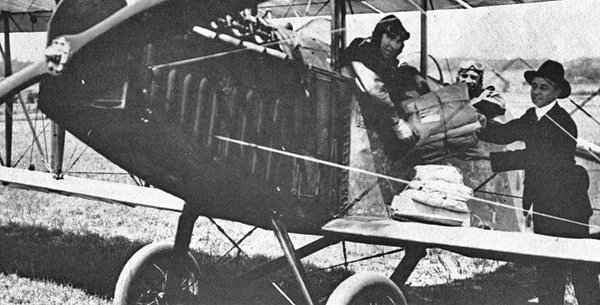 |
Aviation activity picked up
again following World War I, fired by the barnstorming of
wartime pilots in their surplus aircraft. Much of this
activity again occurred from Willows Park, now heralded as
Willows Aerodrome. Lt. G.K. Trim is shown unloading mail,
having just completed the first commercial flight from
Minoru Park in Vancouver to Willows Park in a Curtiss JN-4.
Back to top of
page
Return to
map |
|
Various other aviation ventures
grew over the following
years, including flying
training, charters and the inevitable barnstorming.
Eddie Hubbard secured a
contract flying air mail from Victoria�s Inner Harbour to
Seattle in his Boeing C-700. With
Bill Boeing, Hubbard would eventually found
United Airlines.
|
 |
|

In 1927
Ernest and Cecil Eve
purchased the land near Mt. Tolmie that had been
used by William Gibson for his 1910 flights and
began flying from Lansdowne field (between what
is now the site of Lansdowne Intermediate School
and Bowker Creek). Lansdowne was the first
licensed airfield in B.C.
|
The brothers formed BC
Airways Ltd. and in 1928 began regular service between
Victoria, Vancouver and Seattle. That August, the
company�s Ford Trimotor was lost with five passengers
and two crew during a flight in adverse weather, and the
company subsequently failed.
Back to top of
page
Return to
map |
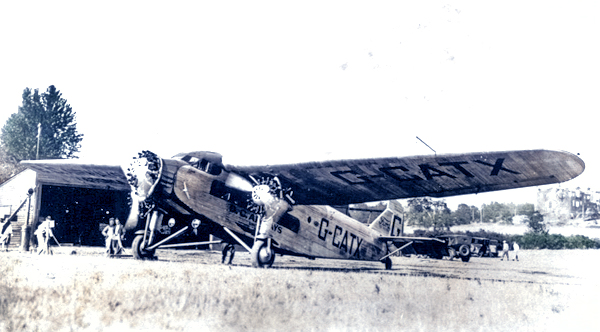 |
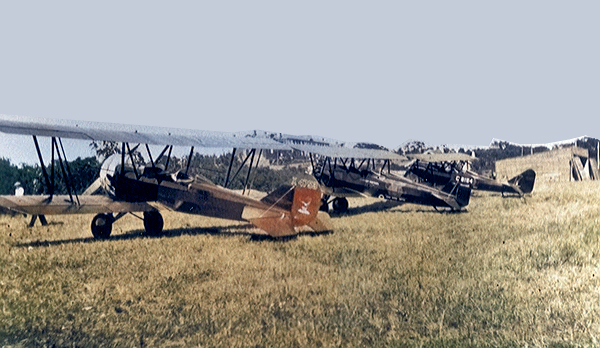 |
Another short-lived airline,
Alaska-Washington Airways of BC utilized the field from 1929
until its demise two years later. The Victoria Aero Club
began operations at Lansdowne in 1928 but was forced to move
with the closure of Lansdowne Field in 1931 due to the
buildup of residential area surrounding the site. This busy
day in summer of 1928 saw an Eaglerock, a Travelair and a
Stinson lined up on the field.
|
|
To replace the well-used
Lansdowne airdrome, a new airfield was established in 1932
with the support of the province and the municipality at
Gordon Head on the current site of University of Victoria.
This Fairchild KR21 from Vancouver was one of the visitors
in 1932.
|
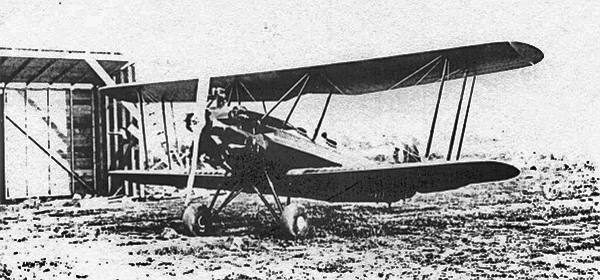 |
|
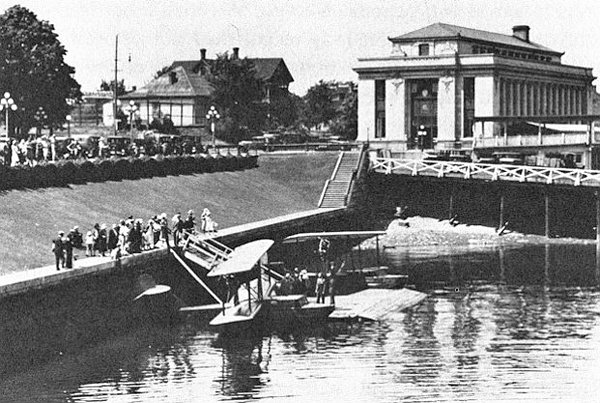
|
At the
same time, Western Canada Airways was operating its
scheduled service flying Boeing B1 flying
boats to Vancouver from the Inner Harbour. In 1932, WCA became
Canadian Airways and began to fly from Esquimalt Harbour
with the permission of the Department of National
Defence. The Esquimalt Harbour Aerodrome was still
listed in The Canada Air Pilot as late as 1956.
Return to
map
|
With war on the horizon, the
government of Canada looked for sites for airfields on
the west coast that would be capable of handling large
military aircraft. Patricia Bay (now Victoria
International Airport) was chosen for development and
No. 111 Squadron relocated there. RCAF Avro 626 #225
was the first aircraft to arrive on October 22, 1939,
with no facilities or runways to welcome it.
|
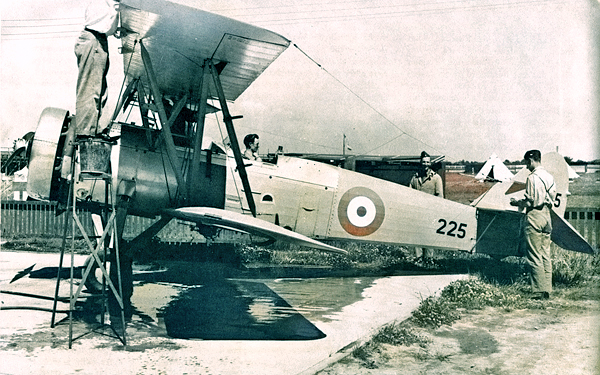 |
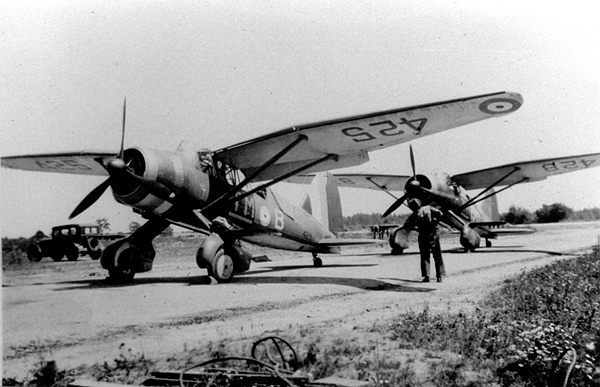 |
Runway paving was completed
in early 1940. By May 15, 1940 the Squadron had moved
all its aircraft, including these Lysanders, to Pat Bay,
in time to fly their first mission in June.
Back to top of
page
Return to
map |
By 1943 RCAF Station
Patricia Bay was a busy and fully functioning
military base with units that included fighter and
bomber reconnaissance squadrons, as well as training
units that were part of the British Commonwealth Air
Training Plan�No. 3 Operational Training Unit (RCAF)
and No. 32 OTU (Royal Air Force�RAF).
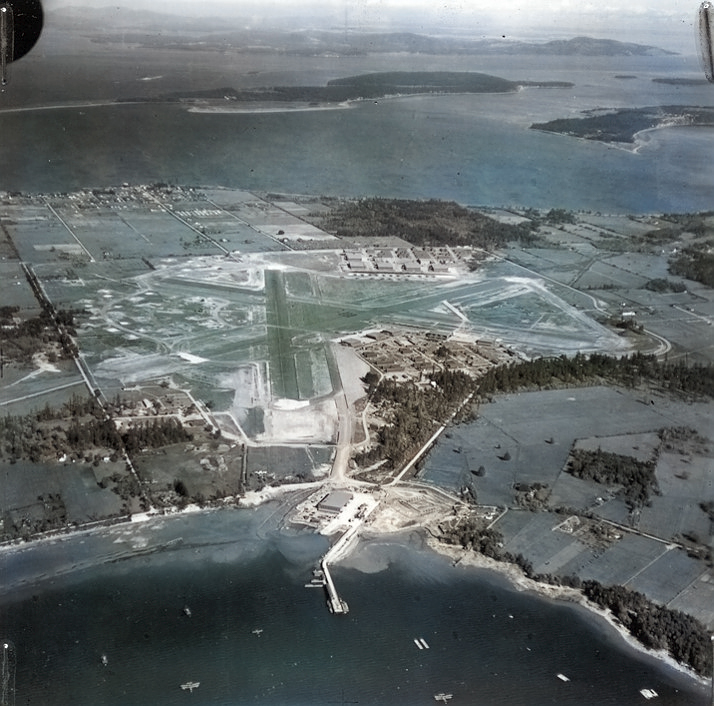
|
This unusual photo shows three
Canadian built Cansos taking off in formation from
Pat Bay during the wartime period.
|
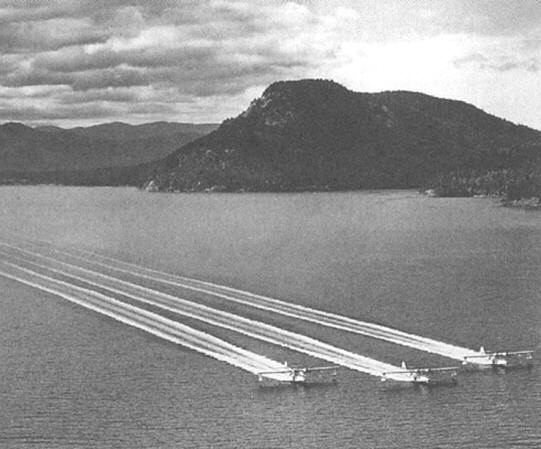 |
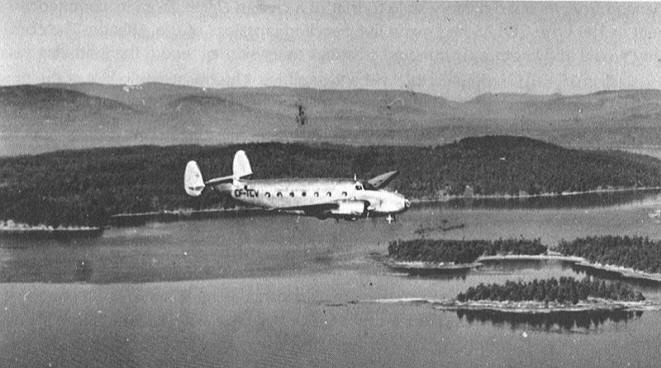 |
Despite the significant wartime
flying activity, the Department of National Defence gave
Trans Canada Airlines permission to use Pat Bay for a
scheduled service from Vancouver starting in 1943. This TCA
Lockheed Lodestar is shown flying over the Gulf Islands. At
the end of the war, a civilian use area was created on the
east side of the field, taking over from the RAF who left in
1944.
Return to
map |
Control of the airport
was transferred to the Department of Transport in
May, 1948. The RCAF maintained a presence at Pat
Bay until 1952. In a sad footnote to the wartime
military presence, several reliable and now surplus
Cansos met their ends on the airfield at the end of
the war.
|
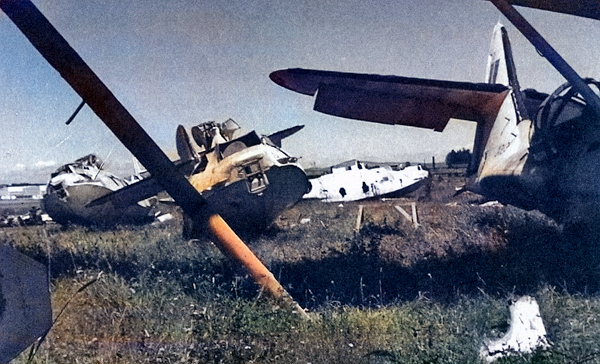 |
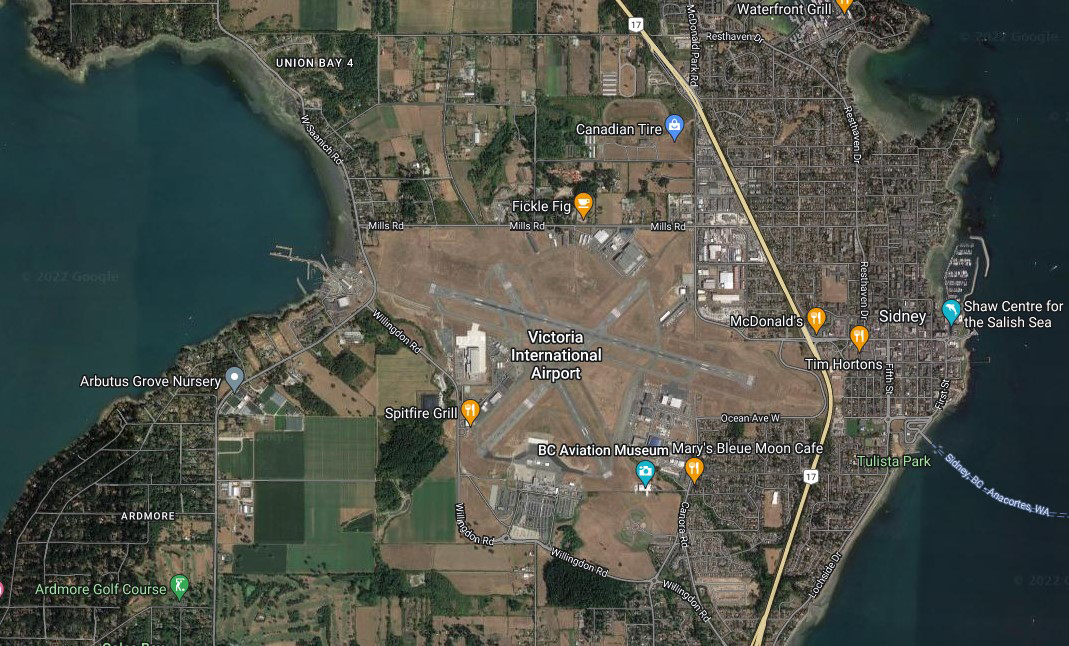
In May 1959 the airport
was renamed Victoria International Airport (CYYJ).
It has since undergone a continuous program of
improvements, including air and ground side
facilities and a new terminal building that is still
being expanded. The airport has a large number of
aviation and ground based tenants, including Viking
Air (Longview Aviation Capital) which manufactures
(among others) the deHavilland Twin Otter. As of
December 2022, nine different commercial carriers
connect passengers to domestic and international
destinations. The Victoria Flying Club is located
at YYJ, as is the British Columbia Aviation Museum.
|
Back to top of
page
Return to
map
Note: Photos
courtesy Chris Weicht except for final aerial view courtesy
Google Maps
 �
British Columbia Aviation Museum Updated:
2023-01-16 �
British Columbia Aviation Museum Updated:
2023-01-16
|